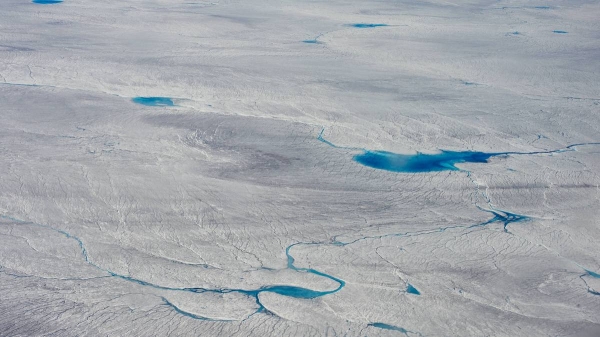At high elevations of the Greenland Ice Sheet, the years 2001 to 2011 were 1.5 °C warmer than in the 20th century and represent the warmest decade in the last thousand years.
A temperature reconstruction from ice cores of the past 1,000 years reveals that today’s warming in central-north Greenland is surprisingly pronounced. The most recent decade surveyed in a study, the years 2001 to 2011, was the warmest in the past 1,000 years, and the region is now 1.5 °C warmer than during the 20th century, as researchers led by the Alfred Wegener Institute just report in the journal Nature. Using a set of ice cores unprecedented in length and quality, they reconstructed past temperatures in central-north Greenland and melting rates of the ice sheet.
The Greenland Ice Sheet plays a pivotal part in the global climate system. With enormous amounts of water stored in the ice (about 3 million cubic kilometres), melt and resulting sea-level rise is considered a potential tipping point. For unmitigated global emissions rates (‘business as usual’), the ice sheet is projected to contribute up to 50 centimetres to global mean sea-level by 2100. Weather stations along the coast have been recording rising temperatures for many years. But the influence of global warming on the up to 3,000 m elevated parts of the ice sheet have remained unclear to due to the lack of long-term observations. In a study now published in Nature, experts from the Alfred Wegener Institute, Helmholtz Centre for Polar and Marine Research (AWI) present clear evidence that effects of global warming have reached the remote, high-elevation areas of central-north Greenland.
Read more at Alfred Wegener Institute, Helmholtz Centre for Polar and Marine Research
Image: Melt Ponds at the Greenland’s Ice sheet margin, flight to Kangerlussuaq, end of June 2012 (Photo: Sepp Kipfstuhl)


